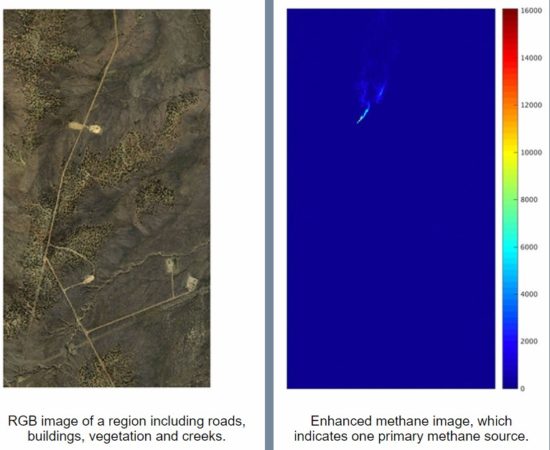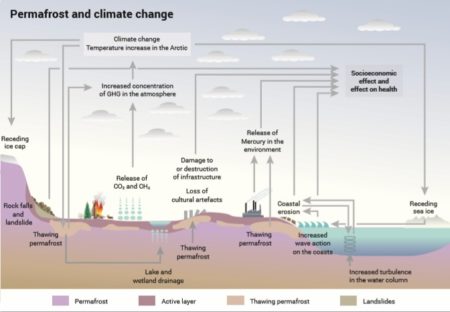February 18, 2020 – I am back in Toronto where we are socked in fog, and it’s raining after it snowed overnight. It is quite a contrast to the blue skies and 34 Celsius temperatures my wife and I left in Costa Rica. To describe our return home as depressing would be an understatement. Winter’s grip on Toronto won’t end for another two months. But for those northern areas of the North American, European, and Asian continents, the seasonal cold isn’t an inhibitor to the overwhelming evidence of increasing permafrost melt.
By its name, you would conclude that permafrost is a permanently frozen subsurface layer of soil, and rock. But permafrost is showing just how impermanent it can be these days in the latest research reported from NASA. Using the Airborne Visible Infrared Imaging Spectrometer (AVIRIS-NG), the NG stands for next-generation, NASA has been flying over large tracts of Alaska doing spatial sampling of the permafrost. In a 2017 study of 30,000 square kilometers (12,000 square miles), AVIRIS-NG took a billion readings of methane emissions. The flights largely covered uninhabited terrain so human causes could be ruled out for any methane emissions observed.
The image below shows the overflying of an area in Alaska with the image on the left revealing human-built structures surrounded by natural terrain, while the image on the right reveals a methane hotspot originating from no known human-generated source.

The methane releases mapped by AVIRIS-NG indicate hotspots in proximity to lakes, ponds, streams and other wetlands. The hotspots tend to be within 30 to 40 meters (33 to 44 yards) of the natural water feature and fade the more distant from the liquid water. They almost disappear in their entirety beyond 300 meters (33o yards) from a water source.
In the study of the data gathered by AVIRIS-NG, it states in its summary that “understanding Arctic methane emissions is crucial to forecasting the region’s impact on global climate. Ongoing efforts suffer large uncertainties when upscaling emissions since direct observations rarely cover scales relevant to both process‐level (fine‐scale) biogeochemistry and land models that operate on much larger scales.”
Although the area of coverage may have been relatively small when compared to the entire northern permafrost belt that rings our planet, it is possible to extrapolate from these observations to make some global conclusions.
Why? Because the area studied is typical of the features found in Arctic landscapes (see illustration below). Its topography is called thermokarst, containing hollows, and depressions caused by thawing frozen ground, interspersed with kettle lakes and ponds that form from melting blocks of ice. Thermokarst landscapes feature subsurface soil, rock, and organic matter deposited by the seasonal cycles of plant growth and decay. Microorganisms feed on the dead vegetation and become the agents responsible for the methane that today is being released.

Researchers contributing to the IPCC annual climate reports have largely concluded that we can expect to see the permafrost areas of the Arctic shrink by 45% or greater just from the global atmospheric warming that has already taken place. So regardless of what we do to mitigate climate change moving forward they believe the Arctic is “locked-in” to a temperature rise that will be more than twice the global mean average increase, and that this will happen before the end of the 21st century. Rapidly thawing permafrost will be a significant contributor to that rise because of methane, which although has only a short atmospheric life before breaking down is 30 times more potent than carbon dioxide as a greenhouse gas (GHG).
When you look at the permafrost zone, an area 22.79 million square kilometers (8.8 million square miles, and approximately 24% of the land surface of the Northern Hemisphere), the AVIRIS-NG 30,000 square kilometer study is but a tiny portion. But it is telling us that methane leaks from permafrost melt are happening on a significant scale. With an estimated 1,672 billion tons of carbon contained in the permafrost, what will be the impact of a 45% reduction in that mass, and where will it all go? Much of it will be absorbed by the oceans, our largest natural carbon sink, but the rest, unless we come up ways to pull it from the air, will heat up our planet in ways not seen in hundreds of millions of years.







